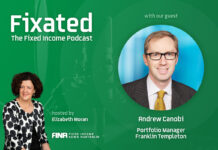
Sébastien Page, Head of Global Multi-Asset and Chief Investment Officer at T. Rowe Price, writes regarding recent market volatility and its implication for investors.
The volatile start to the year in financial markets is unlikely to abate soon. Sustained inflation, a looming Federal Reserve (Fed) rate‑hiking cycle, tightening liquidity conditions, and the unwinding of pandemic‑era economic distortions—among other factors—mean that further price fluctuations can be expected.
Although it is too early to say that we are entering a post‑COVID world, it is clear that the pandemic is no longer the dominant driver of markets that it has been. The new environment will be difficult to navigate—but it will also provide some excellent opportunities for stock pickers.
Fed Hikes Alone Tend Not to Derail Markets
Anxiety over Fed rate hikes was the primary cause of recent volatility. It’s difficult to anticipate how aggressive the Fed’s hiking cycle will be. Although it clearly needs to raise rates to combat inflation, it will not want financial conditions to tighten in a disorderly fashion. But the Fed’s hand is being forced. Inflation seems almost out of control, and Powell enters his second term knowing he has to cool it down.
Also read: Funds To Help Fight Inflation
We can observe that Fed rate hikes alone do not usually derail financial markets. Analysis by our Multi‑Asset Division shows that out of the 21 rate‑hiking cycles since 1974, the U.S. equity market has delivered a positive return 17 times—an 81% hit rate—in the 12 months after a rate hike and 16 times—a 76% hit rate—in the first six months after the first hike. Although the U.S. dollar depreciated against major world currencies in the six months after the first rate hike, it appreciated 12 times—a 57% hit rate—in the 12‑month period.
Also, the expected end point for rate hikes—known as the “terminal rate”—is low by historical standards. This further supports the view that Fed rate hikes alone are unlikely to derail markets.
Stubborn Inflation Could Lead to a More Prolonged Slowdown
Last year, the U.S. economy registered its strongest growth in nearly four decades on the back of low interest rates, pent‑up demand, and trillions of dollars of pandemic‑related fiscal stimulus. I believe these supportive factors are now waning.
As the economy is expected to slow, inflation continues to fuel higher costs. Wages, for example, look set to remain high. Although rising costs in some areas may diminish in time, in other areas—for example, labor costs—they are beginning to look more permanent. The more permanent inflation becomes, the bigger dent it will have on consumer confidence and, ultimately, on consumer spending and corporate profits.
In response to the Fed’s policy update, the Treasury yield curve flattened to levels not seen since 2019–2020. The shrinking spreads indicate that investors are becoming more pessimistic and are skeptical that the Fed can raise rates as much as it would like without crossing the line from slowing to damaging the economy. While it is too early to talk of a recession, the possibility of an economic slowdown beyond what has been priced in to financial markets seems to be increasing.






























